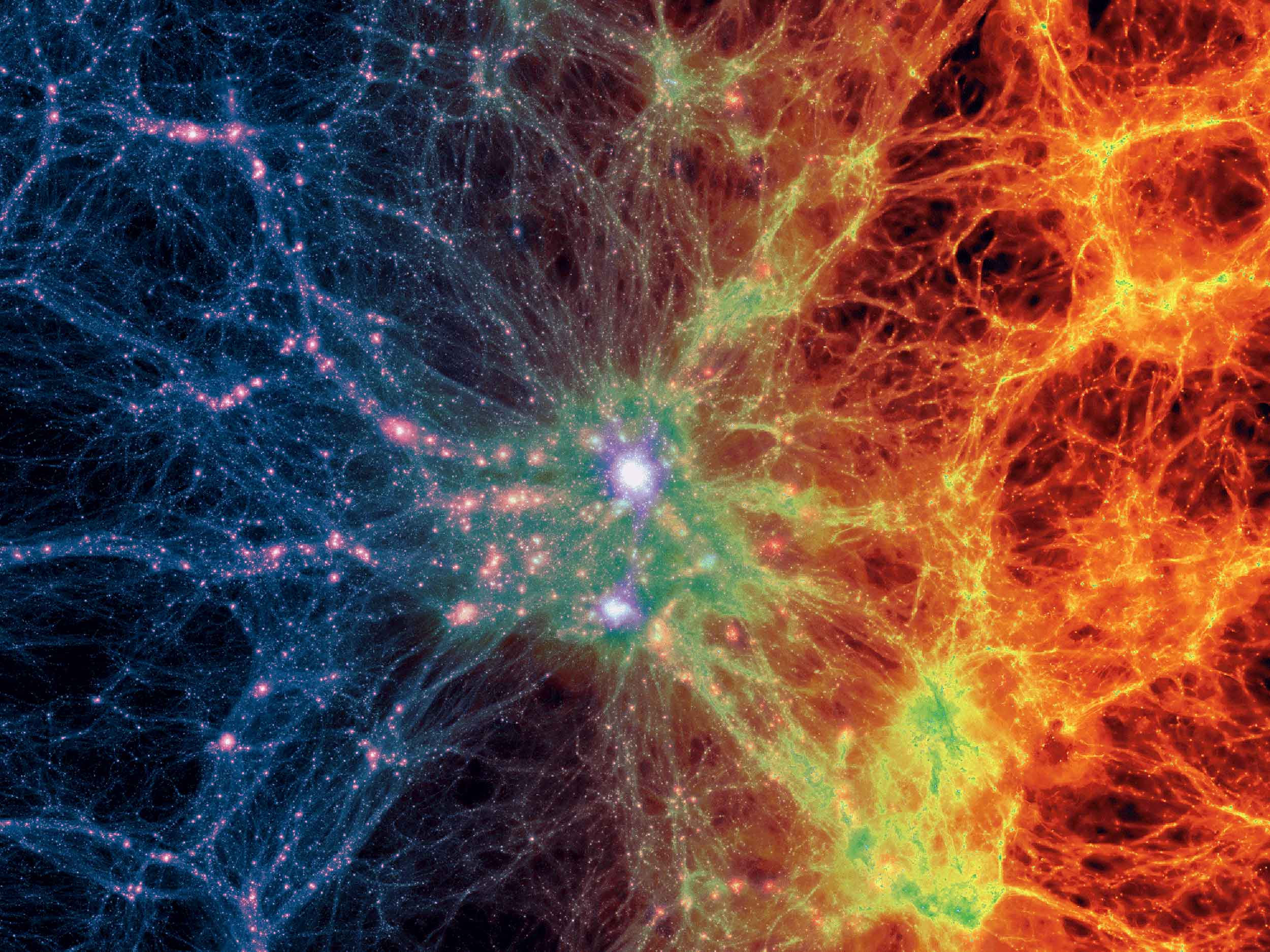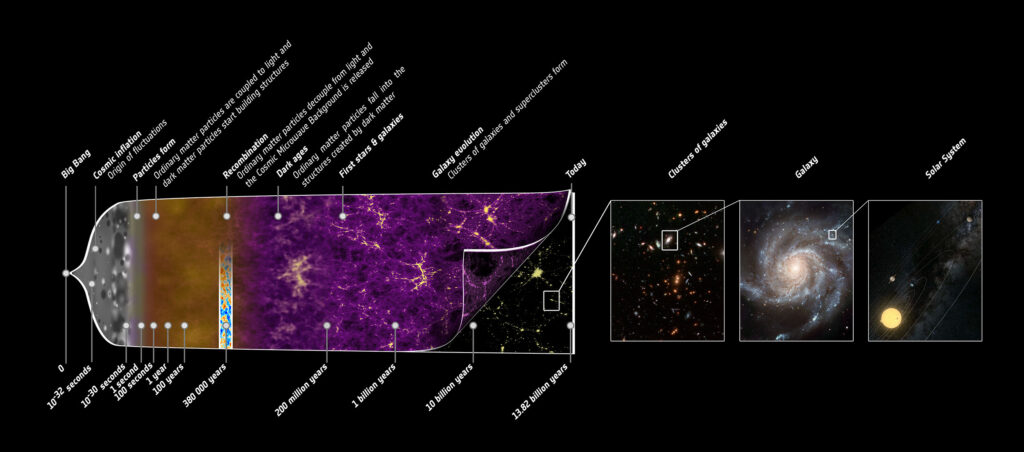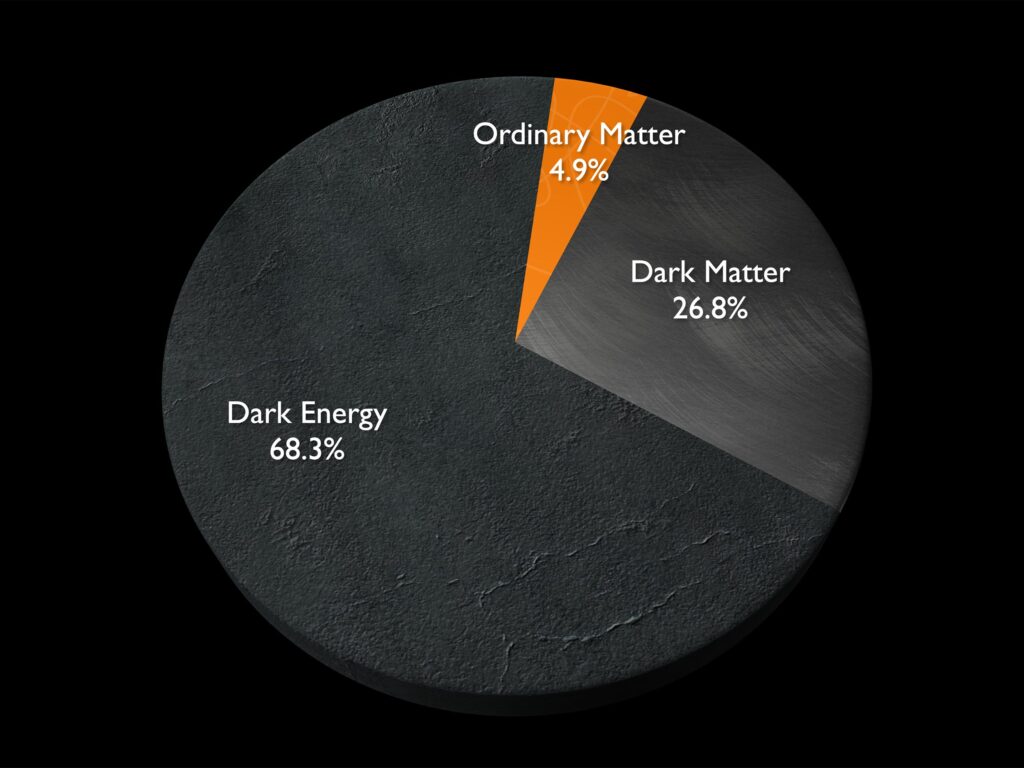Bringing light into the dark universe

Cosmology tries to answer fundamental questions about the universe. Using various telescopes and large simulations, cosmologists investigate the formation of galaxies and the properties of dark matter and dark energy.

Recent observations have shown that the Universe today is dominated by Dark Matter and Dark Energy. Under the action of gravity, these mysterious components hold the Universe together or pull it apart.
In the beginning, shortly after the Big Bang, the Universe was dense and hot. After a period of rapid expansion called inflation, the Universe cooled down and expanded more slowly. In the process, Dark Matter and normal matter including atoms and molecules started clumping together due to gravity – structures developed. In particular, the first stars and galaxies formed about 200 million years after the Big Bang. Later on, galaxies combined to even bigger structures, called galaxy clusters or superclusters. Now, the Universe is about 14 billion years old and the largest structures are still evolving.
To learn about our Universe, cosmologists observe the sky with different types of telescopes. Dark Matter is invisible though, so it can only be detected by measuring its gravitational effect on normal matter and on light. Dark Energy is even more mysterious. Its nature can be studied by tracking the acceleration of the expansion of the Universe that it generates.
A powerful way to facilitate the exploration of our Universe and to interpret observations is through large cosmological simulations. They can help us find out more about structure formation, galaxy formation and the properties of Dark Matter and Dark Energy.
At our booth, you can gain an insight into the exciting work of cosmologists. You can find out what a simulated universe looks like and marvel at a real radio telescope. You can also experience how a large mass between you and a camera would distort your face and take the proof home with you. In addition, you have the opportunity to build your own small radio telescope or rocket out of paper.


